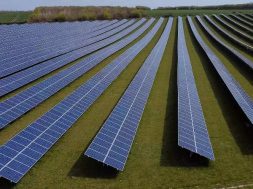
IIT-Hyderabad develops new process to improve solar cell efficiency

Dye-sensitised solar cells hold a lot of promise because of possible cost and environmental benefits
A novel process to improve the performance of Dye-Sensitised Solar Cells (DSSC) has been developed by researchers at the Indian Institute of Technology Hyderabad.
Dye-sensitised solar cells hold a lot of promise because of possible cost and environmental benefits. But, they have low light-to-power conversion efficiency.
The new process, published in the journal Solar Energy, promises to enhance the efficiency.
“A dye molecule absorbs the light energy in DSSC and causes electrons in the dye to jump to titania and then to the external circuit, which causes a flow of electrons, leading to a current,” said Jammalamadaka Suryanarayana, who led the research team.
The first-generation silicon-based cells with energy harvesting efficiency of about 26 per cent continue to be costly.
Second-generation thin film solar cells based on semiconductors like cadmium-telluride and cadmium-selenide have comparable efficiencies, and not much lower cost.
The third generation of dye-sensitised solar cells can significantly lower costs of solar cells while being environment-friendly. But, their efficiencies need improvement to translate to practical products.
In the study, the researchers initially tried introducing holmium oxide, a powerful paramagnetic material, into the anode of the cell and by applying external magnetic fields.
The experiment showed an enhancement in efficiency. However, application of external magnetic field can be power-consuming because electromagnets themselves require energy for their functioning.
The team consequently replaced holmium oxide with iron oxide magnetic nanoparticles since it produced a magnetic field internally. The result was as good.













